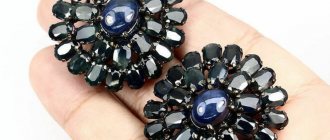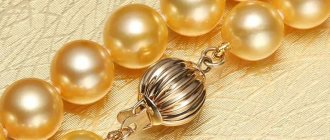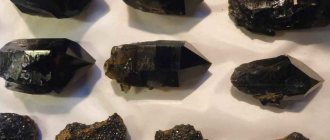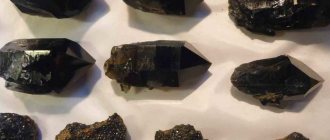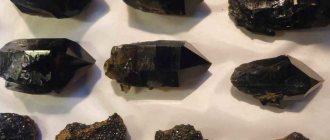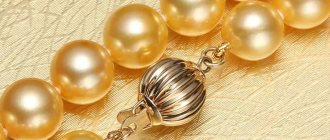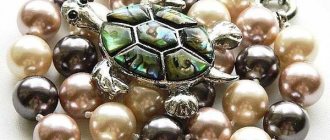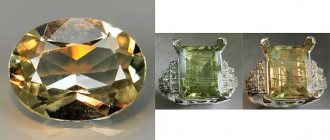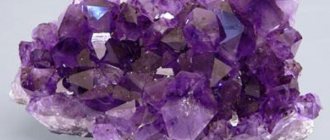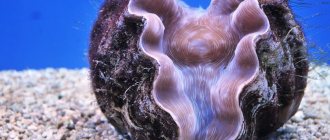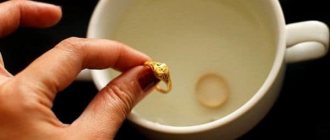Pearls are one of the most ancient precious stones, which are actively used in jewelry and in the creation of beads. It is of absolutely organic origin, as it is formed in the shell of a mollusk. Under natural conditions, pearls are a reaction of the oyster’s body to the invasion of a foreign body, for example, a grain of sand or a parasite. Mother of pearl performs a protective function and envelops the trapped element layer by layer.
Pearls are rare in nature: out of 300 mollusks, only 1 can contain a precious stone. Therefore, jewelry with mother-of-pearl has not only attractive beauty, but also high cost. Fraudsters take advantage of this by passing off painted plastic balls as natural stones. Therefore, it is important to know how to distinguish pearls from fakes.
- X-ray
Types of pearls in jewelry
In order to understand which pearls are better, you need to understand their types. There are several types of gemstone:
- river;
- nautical;
- cultured;
- ennobled;
- artificial.
Real sea pearls are the most expensive stone. It is rarely mined. Freshwater pearls are smaller in size, but are much more common in nature. Freshwater mollusks contain up to 7-8 stones.
Cultured freshwater and sea pearls are most often found in jewelry stores. It is obtained from oysters grown in special reservoirs. Foreign bodies, such as glass beads, are introduced into them, which simplifies the process of obtaining mother-of-pearl. It covers the base with a thin layer.
When harvesting pearls, not all gemstones have an attractive shape or color. The marriage is exposed to x-rays, which changes their hue. Sometimes additional coloring is used. Such pearls are called refined.
Imitation pearls are plastic beads that imitate a precious stone. They are actively used in costume jewelry and in the manufacture of cheap jewelry.
There are differences in natural stones and in the place of their extraction. The most popular pearls are obtained from:
- in the Persian Gulf;
- in the Red Sea;
- off the coast of India and Japan;
- in China;
- off the Ceylon Islands;
- in Indonesia;
- in the Gulf of Mexico;
- in the Caribbean;
- near the island of Tahiti.
Who is pearl suitable for?
For those who are guided by the choice of gemstones for themselves in accordance with the horoscope, astrologers recommend the following:
- Freshwater pearls are suitable for the water signs of the zodiac - Cancer, Scorpio, Aquarius and Pisces.
- Jewelry with rare black pearls will bring a feeling of peace and tranquility to representatives of the fire elements - Leo and Aries.
Natural freshwater pearls are used to produce a variety of jewelry: strings of pearl beads, which can contain stones of the same or different colors and sizes, earrings, pendants, brooches, etc.
Sets consisting of several types of jewelry in the same style are popular. The river mineral is perfectly complemented by cubic zirconia and diamonds.
Which pearls are considered the most valuable?
The most valuable are natural sea pearls. It is large in size, since the biochemical composition of salt water contributes to the intensive production of mother-of-pearl. Freshwater pearls are also valuable, but are much more common. The reason for this lies in the fact that freshwater mollusks contain up to several dozen stones.
Cultured pearls are less valuable. It is not considered a fake if information about its origin is not hidden. Under human supervision, up to 20 pearls are grown inside each oyster. 98% of the stones sold are the cultivated variety.
Treated pearls are even less valuable. It goes on sale after special processing, often using x-rays. Treated stones are sometimes passed off as black pearls.
Imitation pearls using glass or plastic have the least value. Such beads are widely used in jewelry. Most fakes are made from cheap materials coated with low-grade paint.
The value of a pearl is influenced by its color, luster and surface uniformity. The size of the gemstone also matters. It is desirable that the pearls have the correct shape.
Parameters influencing value
Mining freshwater pearls
Freshwater pearls are mined in China, Russia, Germany, and the USA. About 99% of pearls that go on sale are cultured. The leader in the production of mother-of-pearl beads is China.
The place where pearls are grown can be not only a river or lake, but also rice plantations flooded with water that are no longer used for their intended purpose. These fields have a suitable microclimate for the rapid reproduction and cultivation of mother-of-pearl beads.
Freshwater pearls do not have a nucleus, as they are created using a nuclear-free method. To do this, foreign tissue is introduced into the skin fold of the mollusk’s body, which begins to become covered with balls of mother-of-pearl. The layer of mother-of-pearl in freshwater stones is thicker than in sea stones.
The nuclear-free method allows you to insert several implants into the shell at once to grow several pearls. About 12–16 beads can form simultaneously in one mollusk. During growth, mother-of-pearl beads must be periodically turned over so that their shape is as close as possible to the spherical one, which is considered the standard.
This is interesting! There is another technology for creating freshwater pearls, which is called “Mabe pearls”. To implement it, a plastic ball is inserted into the sink, which is gradually covered with mother-of-pearl. Then a hole is drilled in the ball, and the empty space is filled with epoxy resin. Such a core grows well, and the stones turn out perfectly smooth.
River pearls are not currently mined in a natural way, as this is destructive to nature and costly in material terms. It is much more profitable to create a farm on which, in any case, there will be freshwater pearls.
Do you like freshwater pearls?
Very Not particularly
Which pearls are better: sea or river pearls?
There is no clear answer to the question of which pearls are better. Each type has certain advantages. Marine has larger sizes and higher cost. It is often counterfeited, passing off plastic beads and ennobled stones as the original.
Freshwater pearls are cultivated on a large scale. It is actively grown in shellfish in former rice fields in China. The selection of the introduced seed nucleus allows one to obtain a variety of sizes and shapes. This increases the demand for freshwater gemstones.
When growing freshwater pearls, farmers monitor water levels. They turn the oysters in a timely manner so that the stones do not turn out one-sided. A person influences all external growth parameters, but does not artificially increase nacre. All processes occur naturally inside the mollusk. Maintaining optimal conditions allows you to achieve the correct shape of pearls. This is the main advantage of river gems.
Magic properties
Even in ancient times, freshwater pearls were considered to have strong energy; the properties of the stone did not allow vain and self-satisfied people to wear them. Pearl is a purely feminine mineral. It is believed that men who prefer jewelry with pearls become soft and weak-willed due to the fault of mother-of-pearl stone.
Wearing jewelry with this mineral will help the owner in finding happiness in his personal life, longevity, health and fortitude . Mother-of-pearl beads bring equal benefits to people of all ages, but there are exceptions: it is not recommended to keep pearls at home for families with small children and to wear this stone to people leading a nomadic lifestyle.
Types of pearls by color
Pearls boast a rich natural palette of shades. It can be white, yellowish, black pink, blue, cream, green, silver or any other. The further the shade is from white and the brighter the color of the bead, the more attractive and expensive it is.
Varieties of color
Shine
The shade of the gemstone depends on the characteristics of the mollusk’s organism. Therefore, not only light beads are found in nature, but also exotic black ones. They are actively harvested in Tahiti from oysters of the species Pinctada margaritifera. This is the only black pearl that is completely natural. The remaining black beads are either dyed or obtained by x-ray irradiation.
Black beads
Imitation black sea pearls are made from cheap river pearls. It is refined by exposure to radioactive radiation. The stone takes on a dark gray color with a metallic tint, unnatural for nature.
Mostly freshwater pearls are suitable for radiation enhancement. If you irradiate the sea, the impact will go to the core. It will darken and become visible through the outer layer of mother-of-pearl.
Original pearls often have an uneven color. There are spots with more or less shine on the surface. The coloring of fakes is always the same.
Dark pearls are also obtained by treating them with silver nitrate. Sea stone takes on a silvery tint, while river stone takes on a grayish tint. It also has a metallic artificial shine.
Shine, shape, price
Based on the analysis carried out above, we will highlight the main points that tell us how to distinguish sea pearls from river pearls.
Sea (shelf) stones have a much brighter pearlescent luster than freshwater (or river) pearls. The latter often has a matte sheen. The indicator depends on the water where the mollusk lives. The gloss comes from salty oceans and seas.
Another sign of a marine jewel is its round shape. In 99% of cases, egg-shaped (oval) mother-of-pearl beads were born in a river or other freshwater body of water.
The main thing that distinguishes sea stone is the price. It is significantly higher than the cost of a river species. For example, a 45 cm long string of beads with freshwater stones costs 3-5 thousand rubles. A similar piece of jewelry “born” at sea is 40-50% more expensive.
This is due to the long growing process. We focus on cultured pearls, because now store shelves are filled only with them. Wild fish are practically not harvested due to the degeneration of mollusks and the lack of professional fishermen and divers.
Types of pearls by shape
The shape of natural pearls is most often slightly irregular. Beads are ovoid, pear-shaped, elongated or elliptical. Perfectly round real gems are rare. They are mainly used in rings and earrings. Most round pearls are obtained through cultured methods.
Variety of shapes
Description of types of forms
Hemispherical pearls are often found. It is cultivated mainly in Japan, the USA and China. Such a stone grows directly on the shell itself, and not inside it. This affects the shape of the gem.
Hemispheres are the most common and best-selling. They are cheaper than other types of pearls. Hemispherical gems are used in the manufacture of bracelets, pendants, rings and earrings.
Hemispherical shape
The largest pearls are grown in mollusks that live in the southern seas of Australia, Indonesia and the Philippines. The diameter of the gems reaches 20 mm. The large size is the reason for the high cost of natural stones from the South Seas.
Pearls with attractive shapes are called baroque. If the shapes of the gemstone are similar to the silhouettes of animals or any objects, then these are paragons. Gems of this type often become natural talismans. They are often framed in gold.
Types of forms
"Multiple pregnancy", growth time and color
Freshwater pearls grow faster, 2-3 years, and this is its advantage. However, it leads to a drop in value, just like “pearl multiple births.” The number of stones produced by an oyster at one time directly affects the price downwards. Only river creatures are capable of producing up to one and a half dozen stones at a time. Sea mollusks are limited to a maximum of three pieces, but even then rarely. And they grow for 5-8 years.
A variety of colors is characteristic of cultured stones. Pink, black, green, gray, blue, silver and gold - an impressive palette. But pearls that grew in the seas and oceans are distinguished by rich tones. Freshwater pearls look pale in comparison.
And another important addition: freshwater stone is not black or bright pink, and shelf specimens lack blue and green shades.
How to distinguish real pearls from artificial ones
When buying jewelry or beads, it is important to know how to distinguish natural pearls from fake ones. This can be done in several ways:
- Through careful external examination.
- With the help of special experiments.
- By contacting a specialist in checking gemstones, that is, a gemologist.
- Using additional equipment.
- Comparing cost and other factors.
Cost of real beads
Only fake jewelry is sold at a low price. Real pearls are expensive. Beads made from the least valuable white gems of irregular shape will cost several thousand rubles. For cultured round stones with a diameter of 15 mm you will have to pay from 2 thousand dollars.
The price is affected by the color, diameter, origin, and shine of the pearl. The cost also depends on the quality of the surface. Therefore, the price varies greatly. On sale, products with natural pearls cost from $15 to $100,000. At auctions, some pearls sell for millions of evergreens.
Cost of jewelry
Inspection with a magnifying glass
Another way to distinguish artificial pearls from fakes is inspection with a magnifying glass. It is important to check the edges around the holes. There should be no visible scratches on the paint. Under a magnifying glass, real pearls can only be seen as homogeneous nacre. When approaching fakes, specks of dye and smudges are clearly visible. To do this, just look at the bead through a 10x magnifying glass.
Inspection with a magnifying glass
Pearlescent surface
How much does a real pearl weigh?
Natural pearls weigh much more than fake ones. Therefore, checking the weight is an excellent method for distinguishing real pearls from artificial ones. The original contains mother-of-pearl, while the fake has plastic or other lightweight material. Even with a small size, a real pebble cannot be weightless.
Compare each pearl by shape
Each real bead has an individual shape. Therefore, comparing all the gems in a necklace or bracelet is one of the ways to distinguish pearls from fakes.
Comparison of gems
Even in the most expensive jewelry it is impossible to use completely identical pearls. They will have slight differences from each other and peculiar defects. If all the beads are perfectly even, exactly the same and without minor natural flaws, then the jewelry definitely contains artificial stones.
Bead comparison
Gloss test
Another way to distinguish natural pearls from artificial ones is to check for shine. A real gemstone has a deep and uniform shimmer. Fake and poorly cultivated gems have no shine. They are usually dull and unattractive.
The surface of the pearl at the drilling site
The holes on the beads should not be chipped or cracked. The original has no traces of paint. If the holes are made with defects, then it is a fake.
Sun check
It is recommended to examine pearls under the rays of the sun. This method works well in street markets. Natural stones will shimmer with a pale blue hue. You can see the core of the fake. They glow greenish or pinkish.
Tooth test
The “tooth test” is a very interesting way to distinguish pearls from fakes at home. The natural gemstone will create a squeak when it touches the enamel. You can bite fakes completely silently.
Tooth test
Tactile test
Mother of pearl has low thermal conductivity, meaning it heats up very slowly. Thanks to this, the beads remain cold for a long time even when they touch human skin. Plastic jewelry heats up quickly from body heat. This is not the most accurate way to distinguish real pearls from fakes, as it is very subjective.
Fall and hit
It is recommended to drop the bead from a height of about 50 cm. A real stone will receive minor traces of impact, which can be easily smoothed out with a finger. Fake pearls made from glass may crack. The plastic bead will bounce off like a ball.
Destructive test
Mother of pearl is a dense substance with low hardness, which is up to 4 Mohs units. Therefore, the gemstone is easy to damage. To do this, just scratch it with a knife.
Causing damage with a knife
Scratching the surface
When exposed to a knife, a thin layer of mother-of-pearl will begin to peel off from the original. It will look like powder. The fake will have chipped paint and expose the artificial core.
Dust from mother of pearl
After scratching with a knife, you need to wipe the surface with your finger. All damage to real mother-of-pearl will disappear and it will return to its original appearance. On a fake, all scratches and paint chips will remain in place.
Mother of pearl after rubbing with a finger
Friction
If you don’t have a hard object at hand, you can rub the beads against each other. The original produces a small amount of dust. Scratches can be easily removed by rubbing the surface with your fingers.
The process of rubbing beads against each other
Chemical test with acetone
Placing a bead in acetone is another way to identify fake pearls. A real gemstone will not react. The paint on a fake will dissolve, and the core itself may be damaged.
Inspecting the bead after acetone
Vinegar test
Testing with vinegar destroys real pearls. Therefore, you should resort to it only by removing one pebble from the beads. Plastic fake will not react with vinegar. The advantage of this method is the ability to identify cultured pearls. After the nacre layer dissolves, its core will become visible.
Reaction to vinegar
Visit to a specialist
If you are unable or unwilling to carry out experiments, you can confirm the authenticity of the pearls from a specialist. Gemologists do this kind of work. They will accurately determine the type of gemstone and its origin.
Information on the tag
Natural pearls are always accompanied by a quality certificate. You must ask the seller before making a purchase. A quality certificate is an additional guarantee of the natural origin of a precious stone.
Ultraviolet
It is harmless to shine ultraviolet light on pearls. Natural stone gives a bluish glow, while artificial stone gives a green glow. Some fakes do not react to UV rays at all. The source of ultraviolet light can be a special flashlight or a device for checking banknotes.
Fire
Natural pearls are not afraid of fire. It can be brought into the flame for a couple of minutes. In this case, the fake glass will crack, and the plastic jewelry will melt.
Caring for pearl jewelry at home
Like all jewelry, pearls also require a certain amount of care, especially since, although they are considered a precious stone, they are not such in essence and are more vulnerable. To keep delicate pearl beads in their original condition for a long time, it is helpful to know how to clean pearls and how to store them properly.
Cleansing
To maintain the pearlescent glow of pearls, they must be cleaned from time to time. In this case, neither vinegar nor abrasive cleaners will work, as they will only damage the mother-of-pearl layers. It is best to use a soap solution and a soft cloth. You can restore shine to the beads using potato starch or saline solution (1 teaspoon of salt per glass of water). After processing the jewelry, it is allowed to dry and polished thoroughly.
Storage rules
Pearls are stored separately from other jewelry in a box with soft fabric or a special bag made of linen, silk or satin. It is important that the fabric does not stain the mother-of-pearl. High temperatures have a negative impact on the safety of mother-of-pearl beads.
Pearls are kept cool, but if for some reason this is not possible, then place a glass of water next to the place where the jewelry is stored.
Attention! Pearl jewelry should not be stored hanging or in an open space not protected from sunlight.
Jewelry with natural freshwater pearls has long been considered a classic. They are suitable for any outfit and occasion, be it a gala reception or a business meeting. It is for this reason that pearl jewelry will never go out of style.
How to identify cultured pearls
Cultured pearls are not literally fake unless they try to sell them at the price of a wild stone. It is created under artificial conditions, under which the mollusk actively produces nacre. To do this, a foreign body is placed in the shell, performing the function of a seed nucleus.
X-ray
X-rays can help distinguish natural pearls from cultured ones. With its help you can examine the structure of the mineral. The picture shows the presence of a core, density and number of layers. The disadvantage of this method is that as a result of X-ray irradiation, the jewelry may change color.
Bright light
A safer way to identify cultured pearls is to view the stone in a bright light. It is convenient to use an ovoscope for this. By shining a bright light through the bead, you can see the presence of a seed nucleus in it.
Technologies: nuclear and non-nuclear
Let us now consider the differences between cultured pearls obtained from different “parents” - sea and river mollusks. Let us emphasize once again that farmed pearls are natural stones. The only difference is the path of entry of the irritating object into the body of the mollusk.
Unlike freshwater pearls, saltwater pearls are grown using the nuclear method, when a seed (a piece of shell), which acts as a nucleus, is placed in the gonads of the mollusk. The nuclear-free method is used to grow pearls in freshwater oysters. In this case, a grain of sand or a microparticle of nacre is introduced into the mantle.
In nature, microparticles get inside the oyster accidentally, and during cultivation - specifically with the help of humans. The protective function of the mollusk body immediately begins to act. However, it is not able to reject a foreign body, but tries to isolate it, covering it with layers of mother-of-pearl.
History and origin
In history, pearls are mentioned on clay tablets found during excavations in Persia and in the Indian Vedas. The first official records of mining were kept in the Gulf of Manara in the 2nd century AD. e. The first jewelry made from natural river pearls was a necklace from Susa. It was found in 1920, and today is kept in the Louvre.
The mineral was first seen in Russia in the 10th century. Most of all, he liked secular women and priests. Much of the church utensils were inlaid and decorated with shining pearls.
Extraction, location, processing
Man will never be able to create something better than nature. This also applies to river pearls. Those specimens created without human intervention are truly stunning in their completed form. Such pearls are usually found in rich collections of collectors and do not end up on the shelves of jewelry stores.
Basically, the jewelry used is those river pearls that are obtained by cultivating freshwater oysters. The production technology may seem simple, but it is quite labor-intensive in terms of time spent. It all starts with a mature oyster being carefully injected with a mother-of-pearl implant that she must recognize as her own.
Next, over the course of 3 years, the oyster covers this implant with numerous layers of mother-of-pearl. At the end of the period, the oyster is opened and the finished pearl is taken out. Similar cultivation of freshwater pearls is carried out in Russia, America, China and Germany.
Where are pearls mined in Russia?
According to statistics, 90% of all pearls mined in the world are concentrated on specialized farms. Since the 30-40s of the 20th century, this technology has been successfully used in Russia.
View this post on Instagram
Publication from Cabochons, beads, pendants (@charm.beads) Sep 5, 2019 at 10:26 PDT
Today, the origin of pearls occurs in bodies of water:
- Karelia;
- Kola Peninsula;
- Novgorod region;
- Leningrad region.
In the cleanest rivers of Russia there is a gradual recovery in the number of mollusks. Every year, hundreds of pearlescent minerals are retrieved from the bottom of rivers. Unfortunately, there are no such volumes of pearl mining as before. This is because from 1991 to this day, only gentle pearl mining is allowed, which involves partially opening the shell valves (to avoid the death of oysters).
There are still rivers on the territory of our country where there are significant margaritana populations. These are the largest pearls existing in the world. They can live only in those reservoirs where salmon fish are found. Our task is to clean up the reservoirs, thereby increasing the population of salmon and margaritas. The process is expensive and long, but the result is worth it.
INTERESTING: Properties of white agate.
Today in Russia, farms engaged in the extraction of cultured pearls have become very popular. Most of them are located on the northern rivers of the country.
